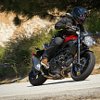About a year ago, the head of our video-editing department, Dustin Carpio, decided to sell his 2006 Suzuki SV650. It was cherry red, mint condition, wearing a brand new set of Michelin Pilot Road 4 tires and an M4 exhaust.
Our cameraman, Ryan, wanted the bike for longer rides and commuting. I wanted to outfit it as a track bike. My father threw his hat in the ring because he was looking for an affordable, lightweight complement to his Suzuki V-Strom 1000, and other potential buyers were sniffing around. No surprise, it sold in 24 hours.
Why so much interest in such a simple little machine? In one word: versatility.
According to Suzuki, it was this multi-functional nature of the original bike that became their focus when designing a new SV650. Suzuki abandoned the SV in 2009, replacing it with the futuristic styling of the Gladius (or SFV650). Riders never really approved of the swap and have been calling for the SV’s return ever since. After eight long years, the Suzuki SV650 is back for 2017.
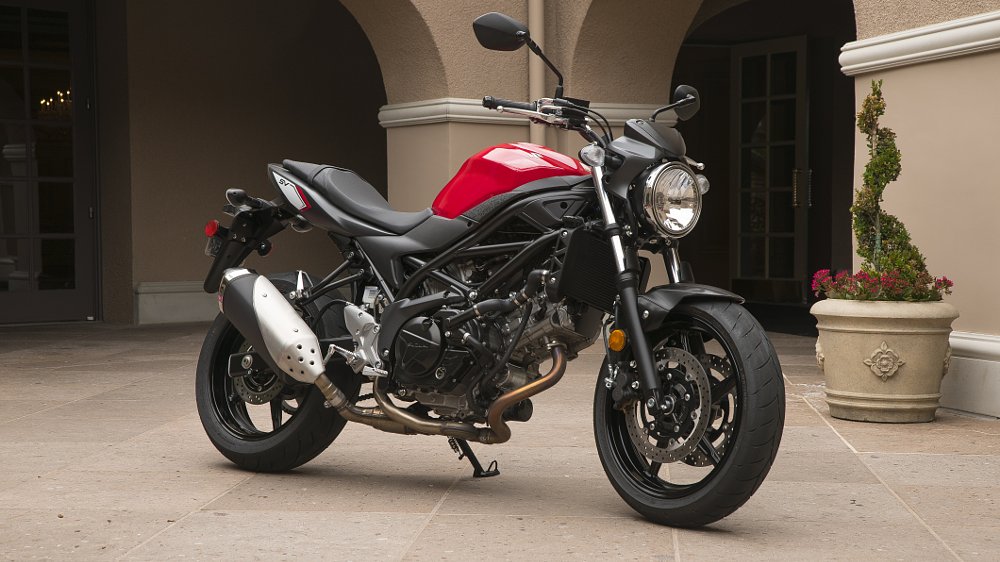
Styling is the first thing that most riders will notice about this new bike. It looks like the engineers mixed the DNA of the original SV with that of the Gladius. While the steel trellis frame remains at the foundation, gone is the goofy, Transformer-like headlight. In its place, the classic round headlight has made a triumphant return. The lines of the tank have been trimmed down for an increasingly svelte look and feel. The new exhaust is cleaner in appearance while cutting weight and the tail section, with its LED lights, looks absolutely killer.
Normally, I don’t fault an OEM for an exhaust note, as the EPA is really to blame, but this engine's song is just too sweet to be muted. I would add an aftermarket exhaust to this pronto. Same goes with that tail section. It looks great, but it will look even better with that bulky rear fender removed.
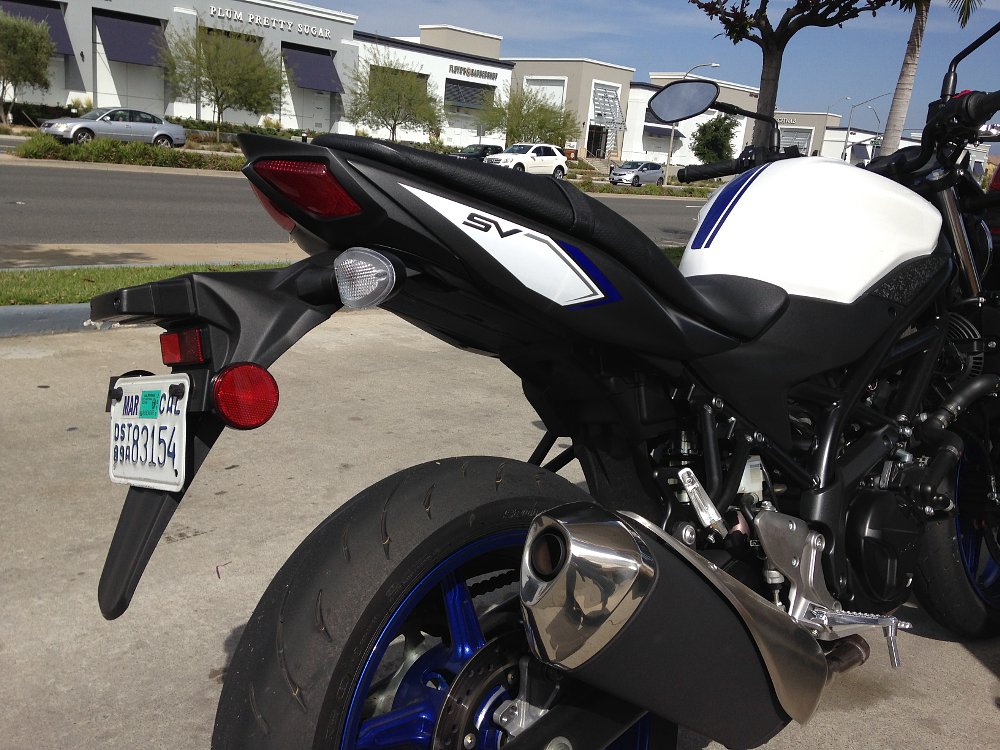
Suzuki decided to launch this new bike on home turf in the mountains north of Los Angeles. After a spirited ride up Route 39 with a handful of like-minded riders, I split off and headed west for some alone time with the SV650 on the Angeles Crest Highway.
While the 90-degree V-twin engine remains the heartbeat of the SV650, it gets a few tweaks to increase efficiency and in turn horsepower. Horsepower peaks at 8,500 rpm, spinning 75 claimed ponies with 47 foot-pounds of torque hitting at 8,100. Below 5,500 rpm, the engine feels docile and tame, perfect for new riders or riders moving up from a smaller displacement motorcycle. Crank on the throttle, however, and the engine comes to life. It rips along, pulling strong from 5,500 rpm all the way to the 10,000 rpm redline with enough grin-inducing power for all riders to enjoy.

Pistons and rings were redesigned and coated to provide longer life while reducing friction, but most of the major modifications were made to components feeding the engine, rather than the engine itself. The airbox was redesigned to increase overall capacity and flow more air into the engine while the throttle bodies have been tweaked to improve fueling. New spark plugs have also been introduced for better ignition. Seems simple enough. More air, more fuel, and better spark equal more power.
But the engineers went even further to tweak that power. Within the airbox, individual snorkel lengths feeding each cylinder have been staggered, a move that Suzuki claims increased mid-range torque. My favorite update was made to the fueling system. While the throttle bodies still utilize Suzuki’s Dual Throttle Valve or SDTV, the main difference is that it actually seems to work.
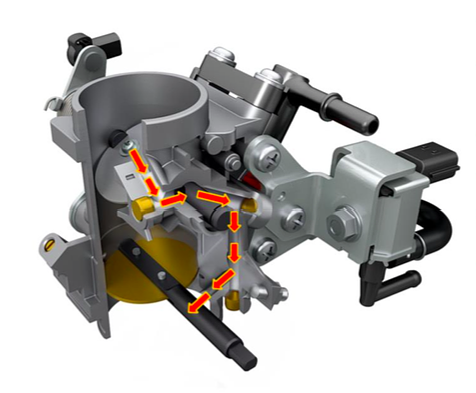
On the old SV650, throttle response was always an issue and owners would use block-off plates and fuel controllers to manipulate the system. (My father’s 2005 V-Strom 1000 gave him similar headaches.) The new SV650 incorporates a “Low RPM Assist” feature in the throttle bodies and it seems to solve this issue. The main throttle plate is actuated by the rider's right hand, but the secondary plate is controlled by a servo motor controlled by the ECU. The new Low RPM Assist feature adds an override function to the secondary throttle plate. As the rider engages the clutch, the secondary plate is cracked and an air shaft is opened, bypassing the main throttle plate.
So what the hell does all that mean?
It means the throttle response is damn near perfect. For new riders, it adds confidence for clutch control off of idle, and for advanced riders it means a crisper, more direct throttle feel.
As for the four extra peak horsepower? I am sure they are there, but I was more impressed with the overall linear powerband. I never felt like there was a spike or surge of power, just perfectly smooth delivery.
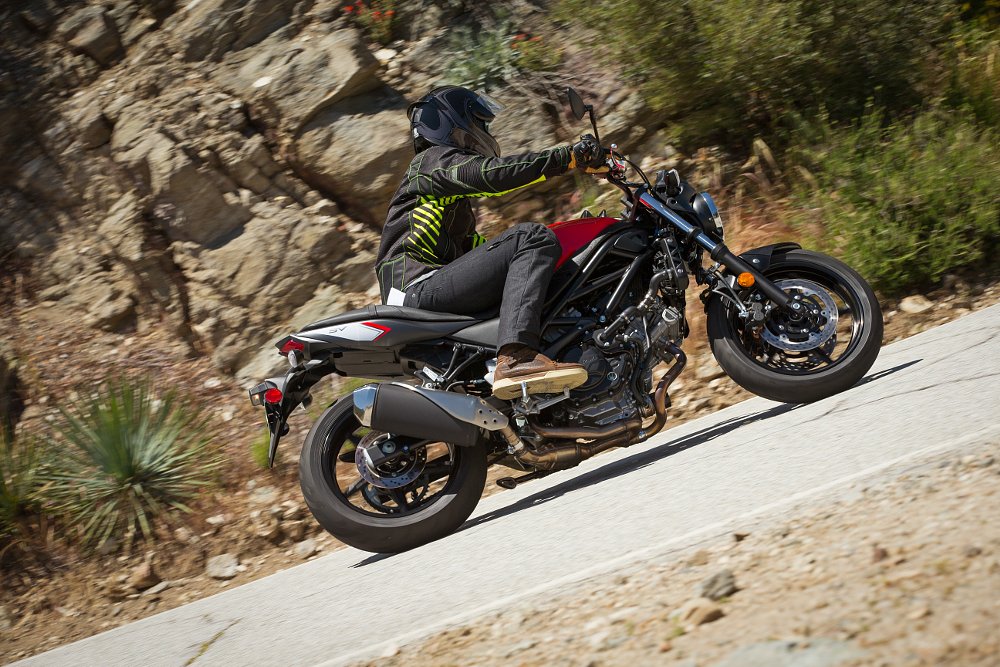
I spent most of the day carving the twisted roads of the Angeles Crest Mountains in third gear. Running it long, I could hit 80 mph before occasionally bumping into fourth. On the highway, sixth gear comfortably held 75 mph while spinning around 5,500 rpm.
While the brakes remain relatively unchanged, with a pair of twin-pot Tokico calipers up front and a single-piston Nissin caliper out back, they slow the bike down nicely. Keep in mind, the wet weight of the new SV is down to 430 pounds (ABS version is 434 pounds). While bigger brakes would be nice for riders looking to take the SV to the track, the majority of riders on this bike will be happy with the stock setup.
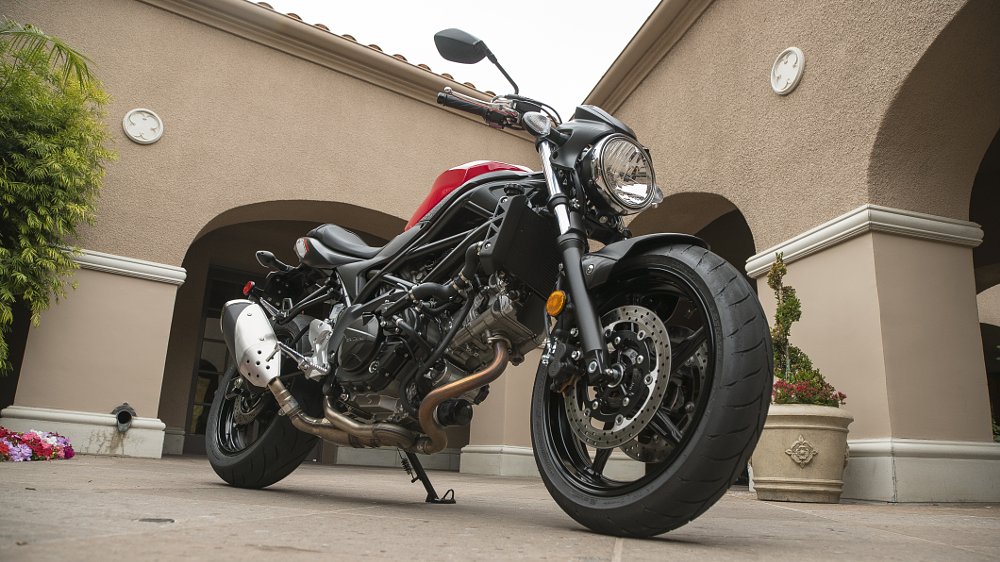
The one thing I did notice was that it was extremely easy to lock up the rear brake. If you’re familiar with my ramblings on Common Tread, you’ll know I am not usually the biggest advocate for ABS, but this rear brake is almost too easy to lock up. There was one instance in particular where I ended up quite sideways, literally, and it could have ended badly. Suzuki only had non-ABS models available for us to test, so I can't comment on how well the ABS will work on the new SV650. But after my experience getting crossed up, the $500 premium over the base $6,999 MSRP for the addition of ABS started looking like cheap insurance. Riders interested in an ABS-equipped SV will have to forgo the white-and-blue color option, as ABS-equipped models will only be available in the red-and-white paint scheme.
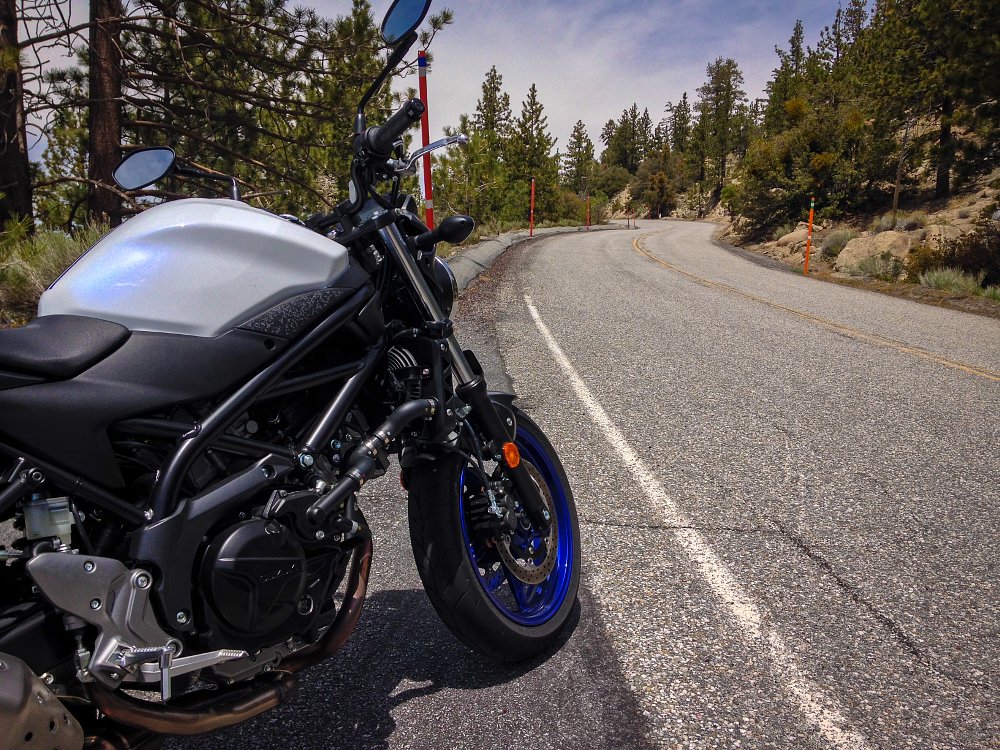
The major disappointment I had with this bike is the lack of an update to the suspension. The front 41 mm conventional Showa fork is sealed with no external adjustments for preload, rebound, or damping. Even the old SV650 had a preload adjuster on the fork. The rear shock was an off-the-shelf link style unit. While it did have seven positions of preload, I didn’t have an opportunity to try adjusting it out of its base “third” position.
So here is my proposed compromise for Suzuki. Leave the base unit alone. The suspension isn’t the worst I have ever ridden and a lot of riders looking at the SV for commuting or casual riding will be completely happy with it the way it is. But for riders looking for a bit more spirited performance from their SV650, offer us an “R” version with an updated suspension.

Hell, just bolt on the front end off of a GSX-R600 and you can update the suspension and the brakes in one fell swoop. Speaking for myself, this is a modification I would be willing to pay extra for and I imagine a lot of other riders would, as well. I say this with confidence because this is one of the most common modifications made to the old SV650. Guys and gals buy thrashed GSX-Rs on eBay to pilfer the front end. It’s so common that I am pretty sure AllBalls has a steering head bearing set specifically designed for this modification.
We wrapped shooting the video portion of this review just shy of 2:30 p.m. and the bike had to be back to Suzuki no later than 5 p.m. This posed a slight problem, as GoogleMaps insisted the hour-long trek down the 210 freeway was going to take two hours and 45 minutes in Friday’s rush hour through Los Angeles. I appreciated the SV’s narrow profile as I split lanes like a maniac all the way back to Brea, Calif.
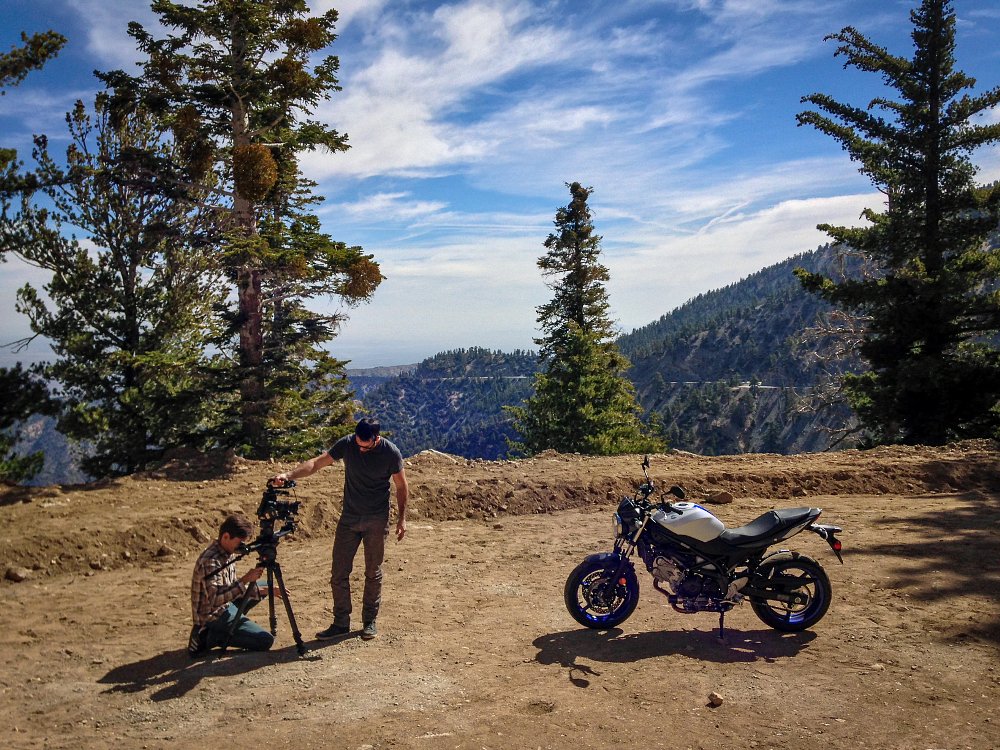
I made it back to Suzuki’s headquarters with almost an hour to spare. While my producer, Brett, was battling the same traffic in a Ford F-150, I had time to wander across the street to Whole Foods with a few hours to kill. I ordered a glass of wine (this was hands down my best grocery store experience ever) and sat down to contemplate my time with the new SV650 and when the other 49 states will finally legalize lane splitting.
The new SV650 is almost everything riders have been asking for. Ducati’s gotten rid of their pint-sized Monsters, which means Suzuki is the only manufacturer left utilizing the small L-twin platform. At the $7,000 price point, the Yamaha FZ-07 is the undeniable competitor for the SV650. Suzuki believes that they have what it takes to reach a wider audience with this new bike.
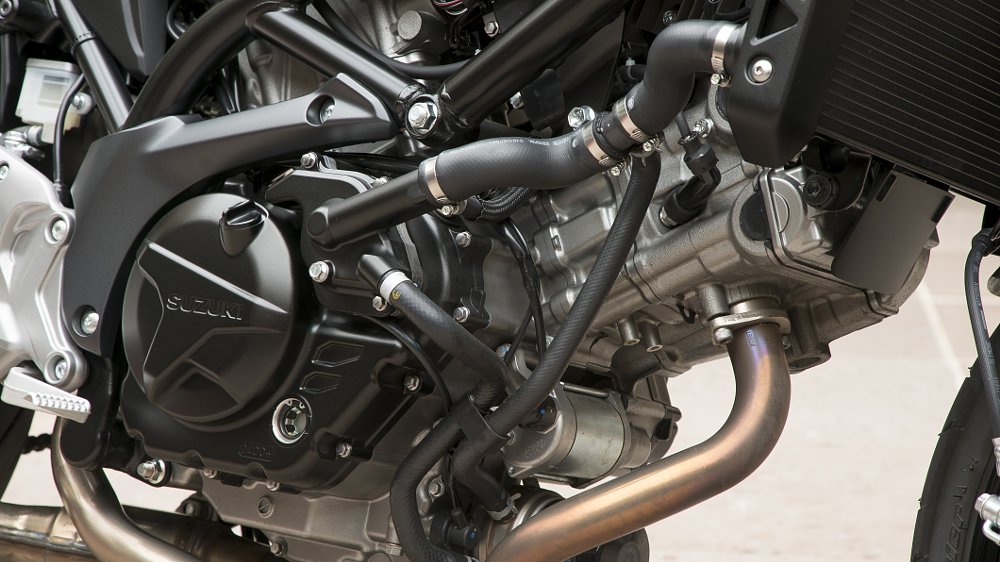
For new riders, it’s an affordable package that works great straight out of the box. Advanced riders will have enough money left over to make a few choice modifications. Suzuki sees the SV650 as a blank slate, ripe for riders to customize to their intended use. According to Tim Olson, Suzuki’s Press Relations Manager, they’ve already started shipping the new SV to aftermarket manufacturers to see what goodies they can cook up. The one mention that struck my fancy would be a possible fairing set with race parts for riders planning to use this as their new track platform.
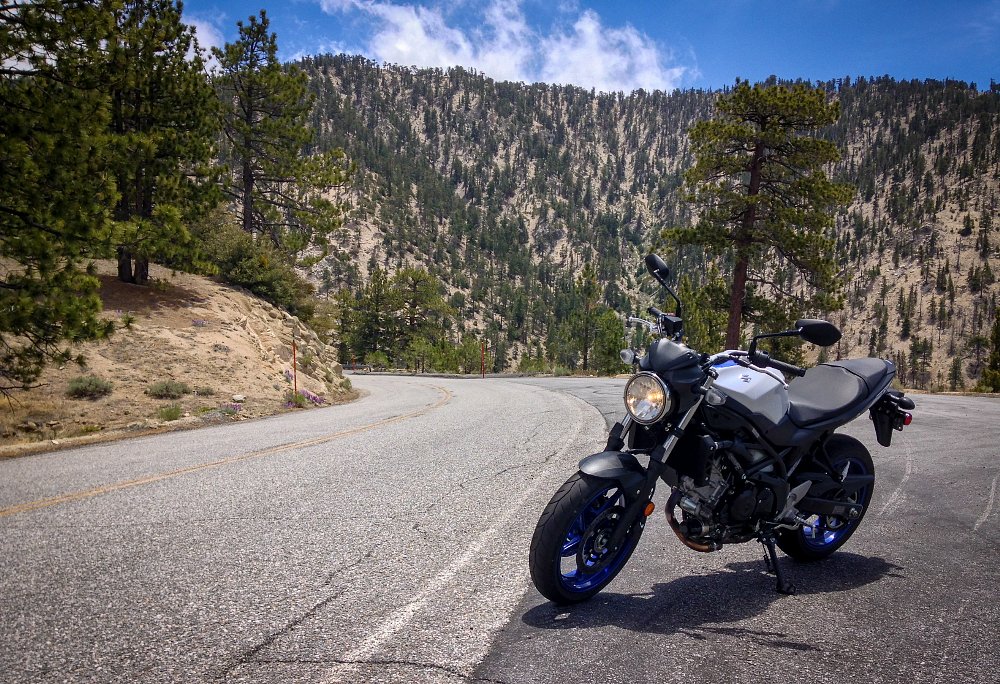
There is no denying the popularity of the earlier SV650s and the impact they had. Chances are you have either owned one, ridden one, or know someone who has. It’s probably the most popular bike littering the parking lot of RevZilla’s headquarters.
Now, the question becomes whether the new bike can live up to that legacy. Based on my short time with this bike, I would say that the new SV650 has a pretty good shot.
2017 Suzuki SV650 Specs
| Price | $6,999 - $7,499 |
| Horsepower | 75.1 hp @ 8,500 rpm* |
| Torque | 47.2 lb-ft @ 8,100 rpm* |
| Displacement | 645 cc |
| Bore x Stroke | 81 mm x 62.6 mm |
| Compression Ratio | 11.2:1 |
| Cooling | Liquid |
| Front Suspension | 41 mm conventional fork |
| Rear Suspension | Link-type single shock |
| Front Brake | Dual 290 mm floating discs, tow-piston calipers (ABS) |
| Rear Brake | Single 240 cc disc, single-piston caliper |
| Front Tire | 120/70-17 |
| Rear Tire | 160/60-17 |
| Wheelbase | 56.9 in |
| Seat Height | 30.9 in |
| Curb Weight | 429.9 lbs* / 434.3 lbs (ABS)* |
| Fuel Capacity | 3.8 gal / 3.6 gal (CA) |
*as claimed by the manufacturer





